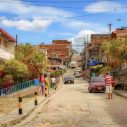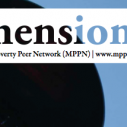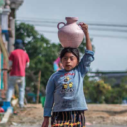
Search
Articles

Building Scenarios for Setting MPI Goals: From Multidimensional Measurement to Multisector Public Policy
In 2011 Colombia announced the launch of its Multidimensional Poverty Index (C-MPI). This launch went hand in hand with important institutional innovations and with the generation of public policies informed by that index. A crucial innovation was the creation of a traffic light dashboard to support the work of a Poverty Roundtable, headed by the President of the Republic.

Editorial – November 2018
This edition tells the story of how two multidimensional poverty indexes (MPIs) were created. One was constructed in Mozambique, a country of 29 million inhabitants, which has become the first African nation to have an official multidimensional poverty measurement. The second was developed in Andhra Pradesh, a state in India with a population of nearly 50 million people, which is the first in that nation to adopt the MPI. This is a significant milestone given that India is the country with the largest number of multidimensionally poor people in the world.

Editorial – Special Issue (June 2018)
When we started OPHI a little over ten years ago, we jotted down our ideas and expectations on a paper napkin one morning in a London bakery. Our goal was to do poverty research that shaped action –with committed and diverse team, working alongside those with different powers, be they protagonists of poverty or policy actors.

The Chilean Experience: Multidimensional poverty measurement and indicators of local environment and social networks
Having a multidimensional poverty measure, securing its continuity over time, and promoting its use as a tool for assessment and public policy design is fundamental for countries such as Chile, where we have opted for sustainable growth based on the principles of justice and equity.

Editorial – Dimensiones 4
The latest global Multidimensional Poverty Index (MPI) update, which analysed 103 countries, reveals a shocking fact: half of the people living in multidimensional poverty are children. By disaggregating information by age, the MPI demonstrates that life for young people is extremely fragile.












